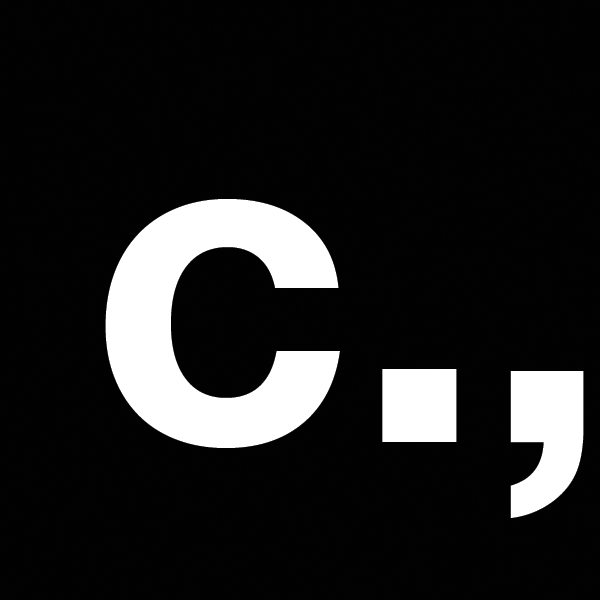THE AGENCY OF CHAIR-ING
a proposal for microsurface
Interesting Tactics
Mary Dahlman Begley
Isaac Hase-Raney
Austin Watanabe
Drew Smith
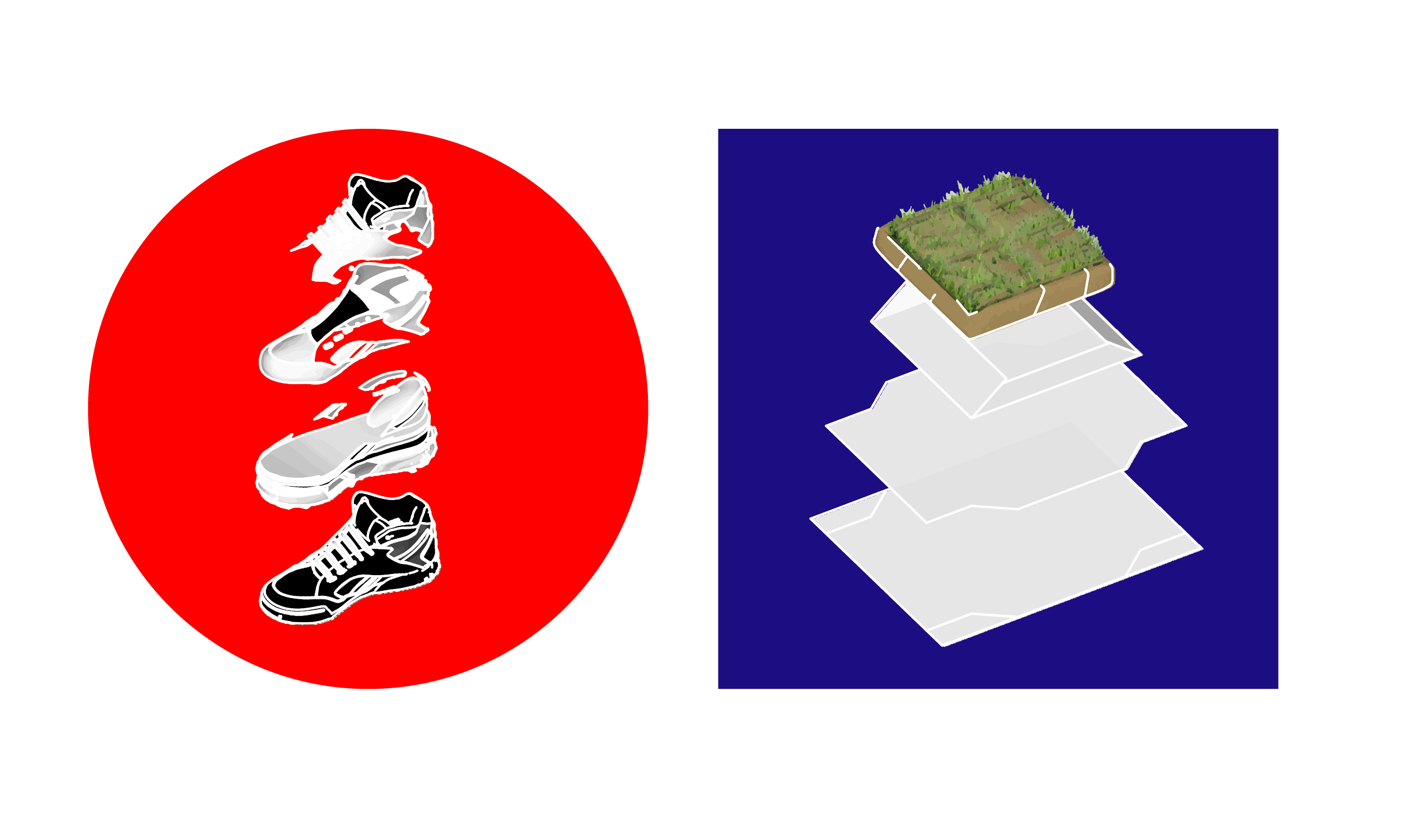
Interesting Tactics is a “utopic spatial practice based in the American Midwest. They conceptualize utopia not as a place, but a process that is both slow and tactical; a way of making do, out of necessity and naïveté. I.T. works in art, architecture, and design, on scales both small and incommensurable.” @int_tactics www.interestingtactics.com
![]()
Are you sitting down? You might want to sit down for this
There are a lot of chairs already. Much has been said about them: what it means and what is needed to be a chair. Four legs, maybe three or less or more, a seat, a back, arms perhaps, and a person to sit down and take a rest upon. A chair is an opportunity to test forms, materials, and ideas impractical or unfeasible at the scale of the building. Designers have tried their hands at chair design as a knee-jerk reaction to test spatial agendas at a furniture scale and now designers of the present are designing shoes as the ubiquitous, accessible art-object-microcosm of a design agenda.(1) Tomorrow’s designers will face new constraints - a glut of chairs, a surplus of comfort, an excess of aesthetic, but nowhere to sit and no place to go.
“To take a chair” implies both object and agency. Taking a chair requires both the existence of a chair and the permission to take it. A chair has agency - a chair produces a seat at a table, a place to rest, a place to be.
A table is a spatial metaphor for participatory space - standing tables, conference tables, open tables, dining tables, etc. A table produces a place for dialogue, politics, decisions. To offer a chair to another is to invite them in, to grant them access. To proceed without an invitation, to take a chair and assert a place, is an act of making do. Per Michel de Certeau, making do is “to make your own what isn’t for you, [to inject] the possibility of agency within reality.” Creating a chair where there was none is a declaration of agency, a tactical subversion - not waiting for access, but granting it to yourself. Alchemizing a seat at a table turns chair into a verb: chair-ing.
The tactical assertion of human will upon a mutable chair-scape is not one-directional. The agency of the chair is also conferred upon human bodies via strategic, ergonomic designs anticipating a mutable sitter. The design of objects like chairs, also has designs on the future human. Chairs shape both behavior and bodies: the straight-backed nursery chair “prevent[s] children from acquiring a habit of leaning forward, or stooping; the upright position of the back affording support when the child is placed at table.”(2) The child is given a seat at the table, but under the condition that they behave within constraints. Yet, agency with conditions is a pale imitator of true belonging.
![]()
![]()
Constraints on agency are couched within the contemporary ideal of comfort, which humans hedonistically desired despite the known consequences to posture, in a twist of cruel optimism.(3) John Harwood defines comfort as “the absence of discomfort [or pain]... the erasure of an experience.”(4) By erasing sensation at the interface of humans and the environment, the chair mutes the sitter, permitting them to be “productive” for hours without getting up and contributing to the behavioral bifurcation of work from play and life. Self-care cannot be distinct from work, play, or life. Taking a seat is a step in the radical, euphoric process of ritualizing your surroundings.
Charles and Ray Eames’ LCW chair straddled the work-life divide and spawned infinite imitations. Their bent-plywood method created a chair that was formed to fit the everyman. A bit of give, but not too much, and a seat “wide, deep, and high enough to accommodate one’s entire rump, regardless of its size.”(5) The influential shape of the seat and back act with ergonomic intent. The interface is smooth and distinct - this chair is the “hyphen between ‘man’ and ‘machine.’(6) Mumford, our old outopic(7) friend, urged us to engage in this hyphen:
Rather than conform to the machine, could we coexist? And to privilege the machine - the chair’s means of production - over the process of sitting - the program of the chair, privileges the manmade over the living. As interface, chair is what separates us from the earth - and consequently also connects us to the ground. By transforming this interface from strictly an object it instead becomes a process, a form of maintenance. Celebrating the personal ceremony that creates space, building a small, slow utopia, we advocate for asserting place all over the place.
Just as a chair, like the LCW, can express style within the home, the shoe is the contemporary indicator of taste. The trends of bizarrely biomorphic sneakers and hoof-like sporty shoes are expensive and estranging, yet proliferate through posts and reposts. Fashion may push the limits of what constitutes ‘shoe,’ yet the function is constant. Interface on the go, shoes are what’s between you and the ground; the shoe is a mobile chair, in function and in style.
In the south, those with unstylish shoes may be derided as bama - “distinctly unfashionable - often in terms of what they’re wearing, but just as frequently [in] their behavior.”(8) This is a word and concept laden with the connotation of class and race. In this case, the Great Migration of African-Americans leaving the South for the North, bama is a word with the weight of racism, now removed from original context and applied to an abstract hierarchy. The individual on the other end of the chide may seek more stylish shoes to combat the moniker. Thus, shoes can offer increased agency, through mobility and through the slippery door of social acceptance.
![]()
Here lies the fault of objects: without distinct thingness a chair or shoe can be unfashionable, uncomfortable, undesirable, ineffective, un-tactical. An object may become a thing when it is imbued with program. A thing that doesn’t do anything for us? Just an object. A chair or a shoe that is used for sitting or walking can be a thing; a chair or a shoe that increases agency and is continually, ritually maintained may become an icon. The tactical chair, seeing the world as a sitscape, implies a process and an assertion of agency. This tactical chair moves us closer toward the utopic chair. But what is the utopic chair? And, just as we ask of utopia, just who exactly is this chair for?
The fundamental act of the Utopians was a physical one.(9) A chair in its most basic form is an object. Taking these cues, we seek to make physical this utopic chair. In response to More’s vision, the utopic chair should be concerned with what forms utopia might take if it were positioned against humans and their tangible legacies. The stylish shoe, the chairscape, and the ergonomic chair imply the presence of a human, whose existence and form is predetermined by the object. What would a decentralized, non-human, means-ends inquiry produce and for whom?
This intention led to the formulation of a chair as a xeno object that implies an opening of oneself to its Other, its unknown outside.(10) A chair asserts itself, making place for the other, the nonhuman - leaving object and thing far behind. A xenotopic chair is a utopic method, a process of becoming. If we invite everyone to the table, it’s going to be a really big table, and it’s going to be really weird. This permission is given between humans and human constructs as a whole - from one to another, you may sit, you belong.
![]()
Superstudio’s Supersurface has similarities to a chairscape in its totalizing, alienating continuity. A favorable politic is present: the Cartesian grid represents an ordered and supposed rational distribution of resources.(11) In representation, this environment is ethereal and evocative. Supersurface is a “box of polarized mirror glass with a grid in the floor through which tubes project, bringing air, food, water, and communications to the occupants, who can also watch a film on TV that describes the designer’s vision of the world and see pictures of clouds projecting on the ceiling.”(12) A grim reality, Superstudio did not succeed in the destruction of objects. In their own words, Supersurface was “the definitive product.”(13)
In response, we propose Microsurface. Microsurface is a process, not a product. Microsurface creates a place to sit where there was previously none. Microsurface is belonging for the Other, the nonhuman, by creating a place to be for the previously unwelcome. Microsurface is a sitscape, an interface removed from a whole. Microsurface has agency and grants agency - to those who wish to engage and to those who do not wish to engage. Rather than totalizing, Microsurface is tactical - offering a mobile acceptance of the current hardscape and potential future for the xeno. Blades of grass pushing up, reaching toward the light, mushrooms popping out of the sole, seeking opposed conditions from their chlorophyllic neighbors, different yet coexisting. Microsurface could be, perhaps, the utopic chair, or a process toward it anyway; Microsurface offers a chance at belonging, inviting the outside in.
![]()

Are you sitting down? You might want to sit down for this
There are a lot of chairs already. Much has been said about them: what it means and what is needed to be a chair. Four legs, maybe three or less or more, a seat, a back, arms perhaps, and a person to sit down and take a rest upon. A chair is an opportunity to test forms, materials, and ideas impractical or unfeasible at the scale of the building. Designers have tried their hands at chair design as a knee-jerk reaction to test spatial agendas at a furniture scale and now designers of the present are designing shoes as the ubiquitous, accessible art-object-microcosm of a design agenda.(1) Tomorrow’s designers will face new constraints - a glut of chairs, a surplus of comfort, an excess of aesthetic, but nowhere to sit and no place to go.
“To take a chair” implies both object and agency. Taking a chair requires both the existence of a chair and the permission to take it. A chair has agency - a chair produces a seat at a table, a place to rest, a place to be.
A table is a spatial metaphor for participatory space - standing tables, conference tables, open tables, dining tables, etc. A table produces a place for dialogue, politics, decisions. To offer a chair to another is to invite them in, to grant them access. To proceed without an invitation, to take a chair and assert a place, is an act of making do. Per Michel de Certeau, making do is “to make your own what isn’t for you, [to inject] the possibility of agency within reality.” Creating a chair where there was none is a declaration of agency, a tactical subversion - not waiting for access, but granting it to yourself. Alchemizing a seat at a table turns chair into a verb: chair-ing.
The tactical assertion of human will upon a mutable chair-scape is not one-directional. The agency of the chair is also conferred upon human bodies via strategic, ergonomic designs anticipating a mutable sitter. The design of objects like chairs, also has designs on the future human. Chairs shape both behavior and bodies: the straight-backed nursery chair “prevent[s] children from acquiring a habit of leaning forward, or stooping; the upright position of the back affording support when the child is placed at table.”(2) The child is given a seat at the table, but under the condition that they behave within constraints. Yet, agency with conditions is a pale imitator of true belonging.
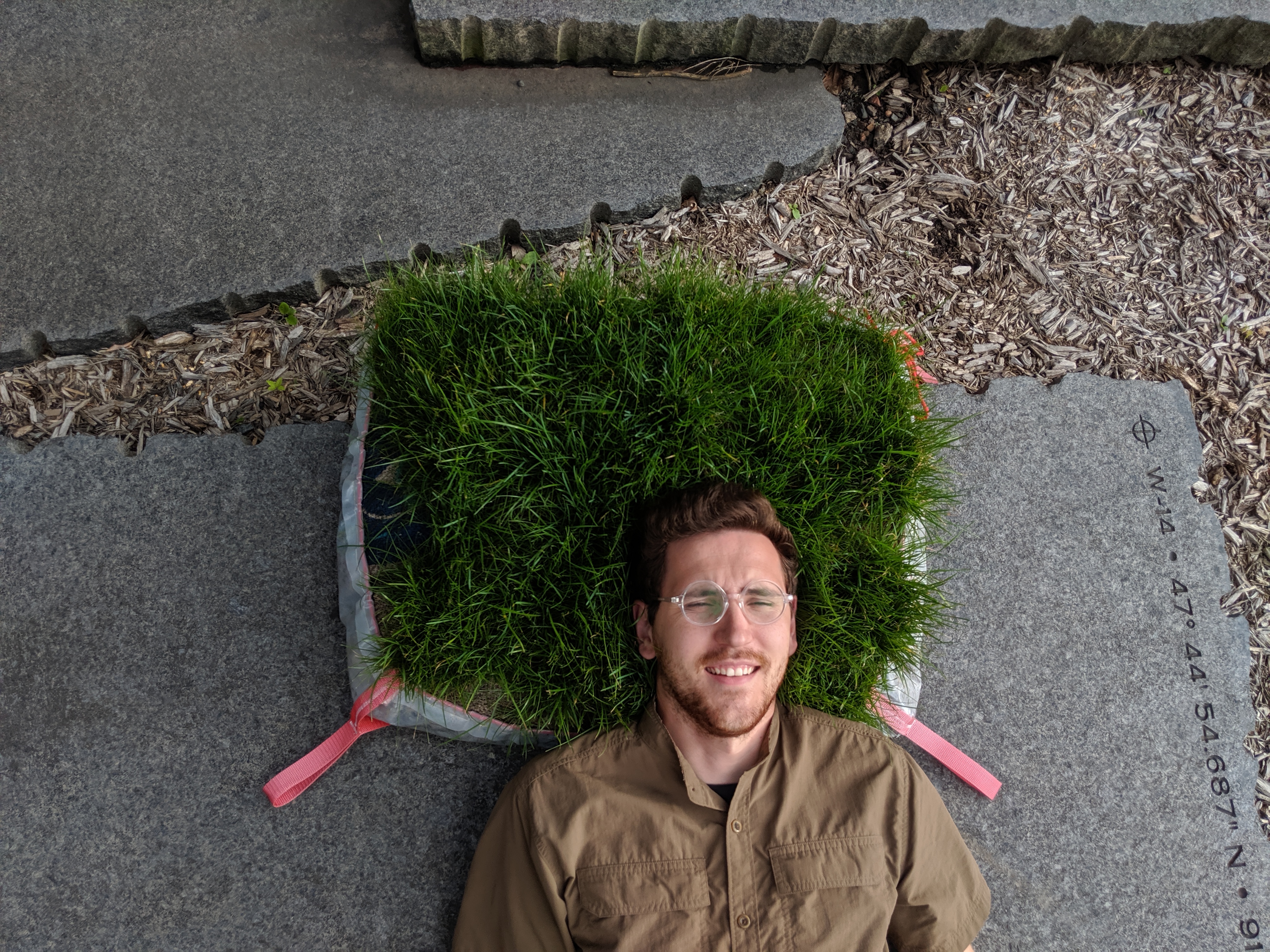
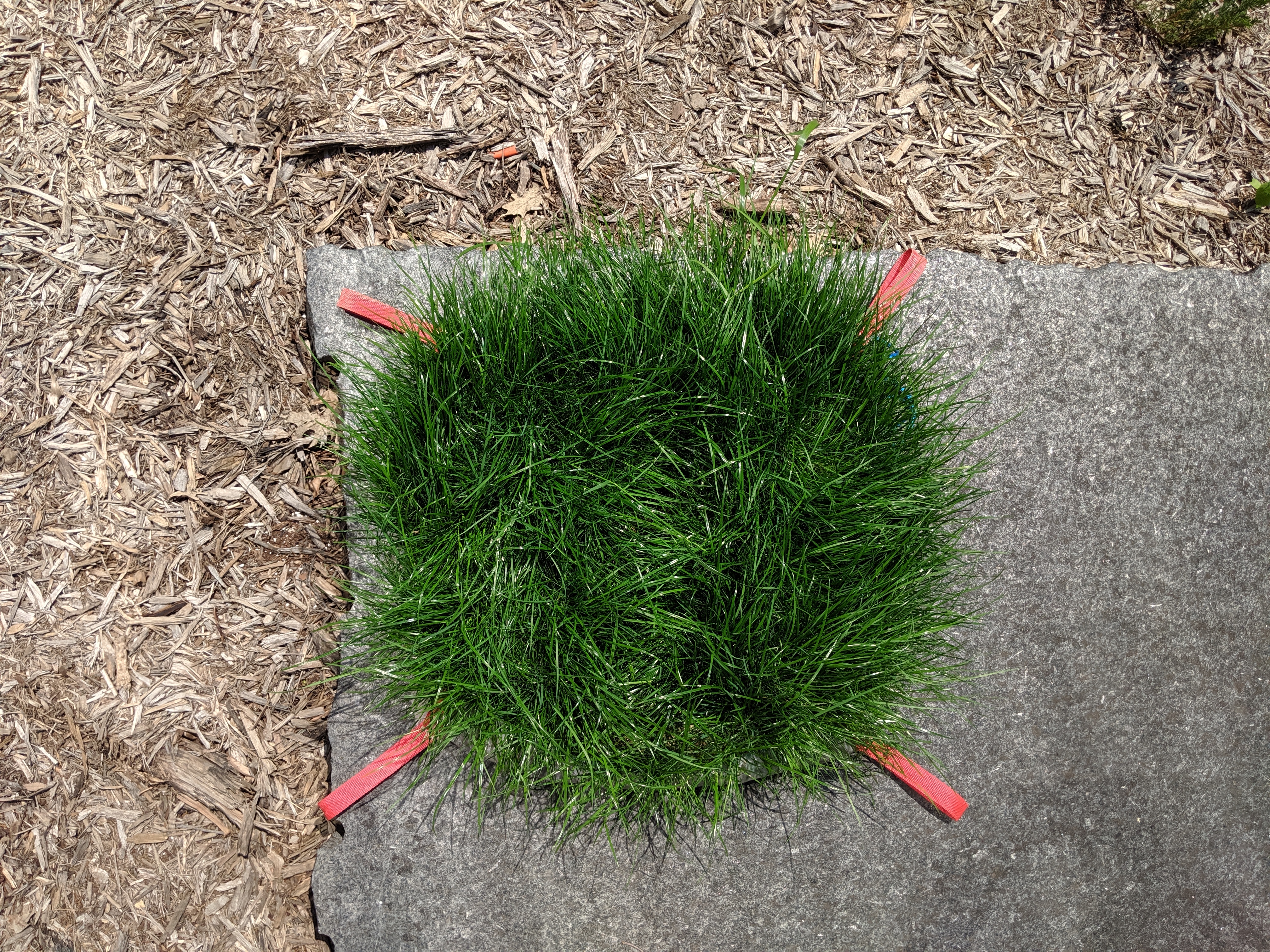
Constraints on agency are couched within the contemporary ideal of comfort, which humans hedonistically desired despite the known consequences to posture, in a twist of cruel optimism.(3) John Harwood defines comfort as “the absence of discomfort [or pain]... the erasure of an experience.”(4) By erasing sensation at the interface of humans and the environment, the chair mutes the sitter, permitting them to be “productive” for hours without getting up and contributing to the behavioral bifurcation of work from play and life. Self-care cannot be distinct from work, play, or life. Taking a seat is a step in the radical, euphoric process of ritualizing your surroundings.
Charles and Ray Eames’ LCW chair straddled the work-life divide and spawned infinite imitations. Their bent-plywood method created a chair that was formed to fit the everyman. A bit of give, but not too much, and a seat “wide, deep, and high enough to accommodate one’s entire rump, regardless of its size.”(5) The influential shape of the seat and back act with ergonomic intent. The interface is smooth and distinct - this chair is the “hyphen between ‘man’ and ‘machine.’(6) Mumford, our old outopic(7) friend, urged us to engage in this hyphen:
Our capacity to go beyond the machine rests in our power to assimilate the machine. Until we have absorbed the lessons of objectivity, impersonality, neutrality, the lessons of the mechanical realm, we cannot go further in our development toward the more richly organic, the more profoundly human.
Lewis Mumford 1934
Rather than conform to the machine, could we coexist? And to privilege the machine - the chair’s means of production - over the process of sitting - the program of the chair, privileges the manmade over the living. As interface, chair is what separates us from the earth - and consequently also connects us to the ground. By transforming this interface from strictly an object it instead becomes a process, a form of maintenance. Celebrating the personal ceremony that creates space, building a small, slow utopia, we advocate for asserting place all over the place.
Just as a chair, like the LCW, can express style within the home, the shoe is the contemporary indicator of taste. The trends of bizarrely biomorphic sneakers and hoof-like sporty shoes are expensive and estranging, yet proliferate through posts and reposts. Fashion may push the limits of what constitutes ‘shoe,’ yet the function is constant. Interface on the go, shoes are what’s between you and the ground; the shoe is a mobile chair, in function and in style.
In the south, those with unstylish shoes may be derided as bama - “distinctly unfashionable - often in terms of what they’re wearing, but just as frequently [in] their behavior.”(8) This is a word and concept laden with the connotation of class and race. In this case, the Great Migration of African-Americans leaving the South for the North, bama is a word with the weight of racism, now removed from original context and applied to an abstract hierarchy. The individual on the other end of the chide may seek more stylish shoes to combat the moniker. Thus, shoes can offer increased agency, through mobility and through the slippery door of social acceptance.
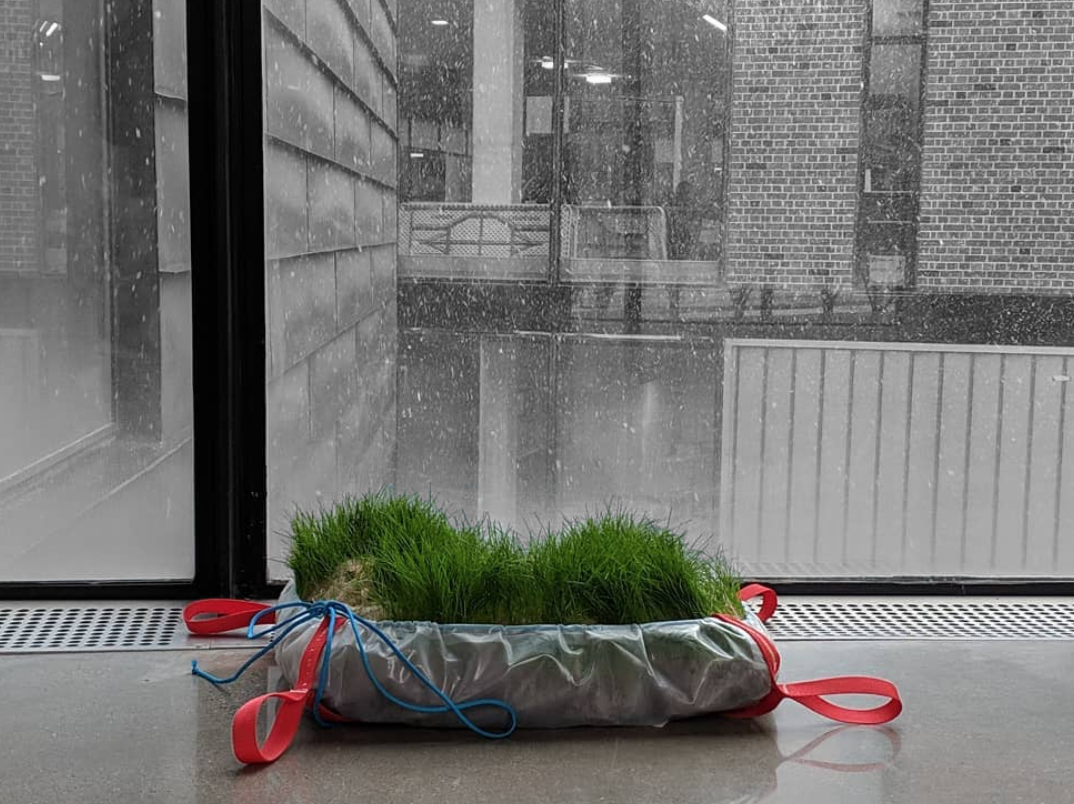
Here lies the fault of objects: without distinct thingness a chair or shoe can be unfashionable, uncomfortable, undesirable, ineffective, un-tactical. An object may become a thing when it is imbued with program. A thing that doesn’t do anything for us? Just an object. A chair or a shoe that is used for sitting or walking can be a thing; a chair or a shoe that increases agency and is continually, ritually maintained may become an icon. The tactical chair, seeing the world as a sitscape, implies a process and an assertion of agency. This tactical chair moves us closer toward the utopic chair. But what is the utopic chair? And, just as we ask of utopia, just who exactly is this chair for?
The fundamental act of the Utopians was a physical one.(9) A chair in its most basic form is an object. Taking these cues, we seek to make physical this utopic chair. In response to More’s vision, the utopic chair should be concerned with what forms utopia might take if it were positioned against humans and their tangible legacies. The stylish shoe, the chairscape, and the ergonomic chair imply the presence of a human, whose existence and form is predetermined by the object. What would a decentralized, non-human, means-ends inquiry produce and for whom?
This intention led to the formulation of a chair as a xeno object that implies an opening of oneself to its Other, its unknown outside.(10) A chair asserts itself, making place for the other, the nonhuman - leaving object and thing far behind. A xenotopic chair is a utopic method, a process of becoming. If we invite everyone to the table, it’s going to be a really big table, and it’s going to be really weird. This permission is given between humans and human constructs as a whole - from one to another, you may sit, you belong.

Superstudio’s Supersurface has similarities to a chairscape in its totalizing, alienating continuity. A favorable politic is present: the Cartesian grid represents an ordered and supposed rational distribution of resources.(11) In representation, this environment is ethereal and evocative. Supersurface is a “box of polarized mirror glass with a grid in the floor through which tubes project, bringing air, food, water, and communications to the occupants, who can also watch a film on TV that describes the designer’s vision of the world and see pictures of clouds projecting on the ceiling.”(12) A grim reality, Superstudio did not succeed in the destruction of objects. In their own words, Supersurface was “the definitive product.”(13)
In response, we propose Microsurface. Microsurface is a process, not a product. Microsurface creates a place to sit where there was previously none. Microsurface is belonging for the Other, the nonhuman, by creating a place to be for the previously unwelcome. Microsurface is a sitscape, an interface removed from a whole. Microsurface has agency and grants agency - to those who wish to engage and to those who do not wish to engage. Rather than totalizing, Microsurface is tactical - offering a mobile acceptance of the current hardscape and potential future for the xeno. Blades of grass pushing up, reaching toward the light, mushrooms popping out of the sole, seeking opposed conditions from their chlorophyllic neighbors, different yet coexisting. Microsurface could be, perhaps, the utopic chair, or a process toward it anyway; Microsurface offers a chance at belonging, inviting the outside in.
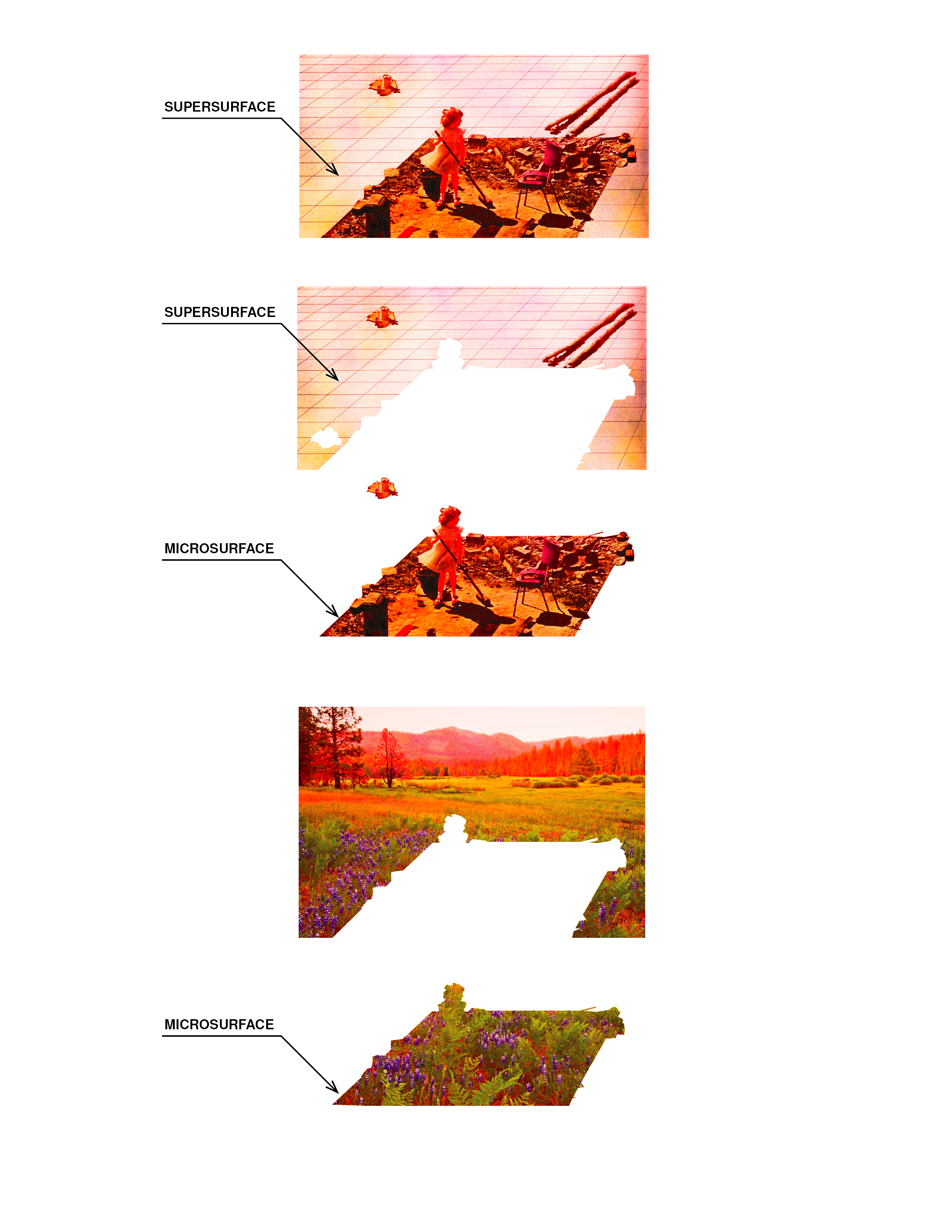
ENDNOTES
- Cf. Playlab, Virgil Abloh, Demna Gvazlaia, Matthew Williams, Kaws, Daniel Arsham etc.
- Adrian Forty, Objects of Desire, (New York: Pantheon Books, 1986), 69.
- Lauren Berlant, Cruel Optimism, (Durham: Duke University Press, 2011).
- John Harwood, “The Interface: Ergonomics and the Aesthetics of Survival,” in Governing by Design: Architecture, Economy, and Politics in the Twentieth Century, (Pittsburgh: University of Pittsburgh Press, 2012).
- Harwood, “The Interface,” Governing by Design.
- Harwood, “The Interface,” Governing by Design.
- “Lewis Mumford traced the etymology of utopia beyond its typical assessment of Outopia, meaning “no place” to its previous phonetic state, Eutopia, Greek for “the good place.” So, caught between nowhere and goodness, the dialectic and mainland, our question is, how far removed is utopia?” Visceral Unreality of Utopia, Interesting Tactics
- Christina Sturdivant, “D.C. Schools Celebrate being ‘Bamas’ Once A Year,” DCist.com, 13 April 2017, https://dcist.com/story/17/04/13/bama-day-dc/.
- Visceral Unreality of Utopia, Interesting Tactics
- Armen Avanessian, Liejte Bauwens, Wouter de Raeve, Markus Miessen, Perhaps it is High Time for a Xeno-Architecture to Match, (Sternberg Press, 2018).
- Superstudio, in Italy: the New Domestic Landscape - Achievements and Problems of Italian Design, (New York: Museum of Modern Art, 1972) 242.
- Emilio Ambasz, in Italy: the New Domestic Landscape - Achievements and Problems of Italian Design, (New York: Museum of Modern Art, 1972) 3.
- Superstudio, in Italy: the New Domestic Landscape - Achievements and Problems of Italian Design, (New York: Museum of Modern Art, 1972) 251.
